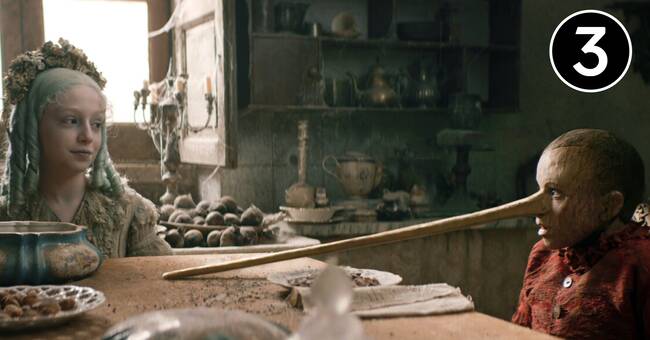So strong is
Disney's cultural occupation of our senses that the filmmaker's version of Pinocchio from 1940, forever became the original image of the wooden doll, but this icon has been carved out several times before and after, both in feature films and animation, and has been a model for both the horror doll Chucky as the character Hedvig in the children's program From A to Z.
The always annoyed and constantly chattering Italian comedian Roberto Benigni seems to have an extra strong bond to the little wooden skull. Twenty years ago, he directed, and bizarrely enough (despite his then 50 years) played the lead role in a live-action version, and here in Matteo Garrone's contribution, he returns as Geppetto, the poor carpenter who carved out the title character.
When Matteo Garrone,
the man whose name flew over the world as the director behind the fierce mafia drama Gomorra, is now trying to rid the Classic from its American fetters one could expect a more realistic and hard hitting variation, but this is rather saga with large and snirkligt S.
A colorful and mammoth adventure packed with imaginative and grotesque figures, where the giant snail lady and chimpanzee who are the city's misguided judges are some of the favorites.
You know the premise: Pinocchio's dream is to become a real boy, of flesh and blood, but to become that he must show that he is a kind and godly type, which is easier said than done when he, like a wood-veneered Emil, is attracted to various hyss.
Sure, the edifying tone is an ounce annoying - here, anyone who wants to play instead of turning into a donkey turns into a donkey - but calling the story of Pinocchio a moron would be like accusing the sea of being wet, it's like a basic premise. In any case, Garrone and his computer power dress the constructive in a rolling costume of anarchist antics, suggestive scenes and heartbreaking stunts.
And the nose then?
Yes, it grows, but only once, and then the good fairy lets a bunch of woodpeckers hack back the nose to the correct size.
It looks quite brutal and there are more violent moments that could never have found their way into the Disney version, but this interpretation is also closer to Carlo Collodi's model from 1880 - created in the wake of the Brothers Grimm, a time that rather frightened children to obedience than issued trigger warnings.
It continues to hail Pinocchios.
Soon he will be annexed by the United States again, more specifically by Guillermo Del Toro, the man who created the brutally wonderful drama Pan's Labyrinth.
It can probably also be good, but then it's time to lock the doll in the carpenter's boa for a while again.

